Landscape Renovation Fort Worth
Landscape Renovation in Fort Worth
Landscape renovation fixes existing landscapes without bulldozing everything and starting over—you're keeping the good stuff, replacing what's failing, updating what's outdated. Most Fort Worth properties hit a point where the landscape just doesn't work anymore—foundation shrubs planted in the '90s now covering every window, irrigation systems with more broken heads than working ones, patios cracked and settled from our clay soil, drainage turning yards into swamps every storm. We renovate landscapes all over Fort Worth. Older homes in Fairmount with gorgeous mature oaks but everything else looking rough. Properties in Tanglewood where those Indian hawthorns the builder stuck everywhere are now eight feet tall blocking windows. New builds in Walsh Ranch where the builder landscape was pathetic to begin with and needs immediate help. The smart move is renovation—keeping mature trees worth thousands of dollars, preserving hardscape that's still solid, fixing actual problems instead of cosmetic Band-Aids. Complete removal and starting over costs way more and you lose everything—including established trees that took 30 years growing. We've renovated hundreds of Fort Worth properties—some needing major overhauls, others just strategic updates—every situation different based on what's actually there and what makes financial sense keeping versus replacing.

Figuring Out What Stays and What Goes

Mature trees are gold—30 years of growth, cooling your property 10-15 degrees in summer, tens of thousands in value. We preserve healthy mature trees no matter what—live oaks, cedar elms, even those scraggly hackberries if they're providing shade. Properties over in Monticello and Berkeley, those big old trees define the neighborhood. You don't just cut those down because you're renovating. We design around them—working with root zones, protecting trunks during construction, making them features not problems.
Existing shrubs get honest evaluation—some are worth severe pruning and keeping, others are just done and need removing. Yaupon hollies that got too big but are healthy? We'll prune them back hard. Wax leaf ligustrum that's 15 feet tall where you wanted four feet? Those are coming out, there's no fixing that. Red-tip photinia with constant fire blight? Gone. We don't keep plants just because they're there—if they're wrong for the location or hopelessly overgrown, out they go.
Hardscape sometimes salvageable, sometimes not—minor paver settling we can fix, completely failed retaining walls need rebuilding, cracked concrete patios are judgment calls depending on severity. Fort Worth clay causes constant movement—hardscape that wasn't built with proper base fails within years. We assess honestly—what's repairable versus what's throwing good money after bad. That flagstone walkway with a few wobbly stones? Fixable. That patio with three inches of differential settling and cracks everywhere? You're rebuilding it.
Irrigation systems after 15-20 years are usually more broken than functional—controllers outdated, heads broken or misaligned, coverage gaps everywhere, lines cracked from clay movement. Sometimes we renovate existing systems—new controller, replace heads, fix major leaks. Other times the system's so far gone that starting fresh costs less than patching an endless string of problems.
Drainage issues don't fix themselves—they get worse over time as settling continues and problems compound. Standing water near foundations, erosion channels through beds, soggy spots where nothing grows. We identify drainage problems during renovation—watching where water goes during storms, reading the landscape, designing actual solutions not temporary fixes.
Lawns tell you their condition pretty clearly—healthy dense St. Augustine just needing care versus patchy weedy disasters beyond saving. Severe compaction, more weeds than grass, bare dirt showing through? That's probably getting ripped out and replaced. Decent lawn just neglected? Renovation makes sense.
Typical Renovation Problems We See Constantly
Overgrown foundation plantings—the number one issue in Fort Worth landscapes over 10 years old. Those "small" shrubs the landscaper planted are now monsters. Indian hawthorns covering windows, nandinas blocking walkways, wax leaf ligustrum swallowing entire house fronts. Nobody considers mature size when planting—then you're either pruning constantly or the house disappears. We rip out oversized plants regularly—replacing with actually dwarf varieties that stay the size they're supposed to. Dwarf yaupon maxes out at three feet. Dwarf Anthony waterer spirea stays under two feet. These are the plants that should've been used initially.
Failing irrigation systems causing landscape decline—half the heads broken, controller programming lost when power went out three years ago, coverage so bad that half the yard's dying while the other half's drowning. Fort Worth summers will kill everything without irrigation—renovating the landscape without fixing irrigation is pointless. We update systems during renovation—new smart controllers, replace all heads, redesign zones matching current plantings, ensure adequate coverage before spending money on plants.
Dated aesthetic styles screaming specific decades—landscapes from the '90s with excessive river rock and Bradford pears (now all splitting apart), 2000s xeriscapes looking harsh and unwelcoming, builder minimalism that was inadequate from day one. We update to current aesthetics—removing dated elements, plant palettes that aren't trendy but timeless, designs that'll look good in 10 years not just today.
Drainage problems developed over time—Fort Worth clay settles and shifts, creating low spots where water collects, erosion channels forming, problems worsening each year. That low spot near your patio? Started small, now it's a pond every storm. We fix drainage comprehensively during renovation—French drains, catch basins, regrading, permanent solutions addressing root causes.
Hardscape deterioration is normal after 15-20 years—pavers settling and spreading, concrete developing cracks, retaining walls starting to lean, surfaces becoming trip hazards. Clay soil movement accelerates problems—what might last 30 years elsewhere fails in 15 here. We assess hardscape honestly—repairable issues get fixed properly, hopeless cases get rebuilt correctly this time.
Lawn degradation from compaction and neglect—Fort Worth clay compacts like concrete, roots can't penetrate, grass thins out, weeds take over. Core aeration helps but severely degraded lawns sometimes need complete replacement—remove old sod, till and amend soil, install fresh St. Augustine, start over done right.
Renovation Phasing That Actually Makes Sense
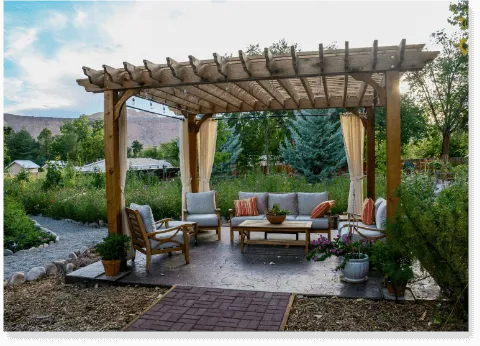
Infrastructure first—irrigation and drainage before plants, hardscape before beds, getting systems right before aesthetics. Planting before fixing irrigation is backwards—you'll discover the irrigation's inadequate after plants are in and struggling. We recommend irrigation first—ensuring water delivery works, then hardscape, then finally plantings knowing they'll have what they need surviving.
High-impact areas get priority—front yards everyone sees, outdoor living spaces you actually use, problem areas causing ongoing headaches. Limited budgets go further concentrated on visible important areas versus spreading thin trying to do everything at once. Front entry and main entertaining area renovated properly beats mediocre work throughout the entire property.
Seasonal timing matters—major landscape disruption better during cool months, avoid planting peak summer, fall renovation in Fort Worth works great. September through November ideal—moderate temps, plants establishing before summer, completing projects before holidays. Spring works too but you're racing against summer heat.
Living through renovation requires planning—maintaining access, keeping things somewhat functional, reasonable timelines, understanding some disruption is unavoidable. We plan logistics thoughtfully—driveway access maintained, dust and mess managed, realistic schedules, appreciation for homeowner patience during construction.
Contingency budgets for surprises—renovation always uncovers things. Irrigation problems worse than apparent, drainage issues hidden, hardscape base completely missing. We recommend 15% contingency—handling discoveries properly without stopping projects or making compromises because money ran out.
Fixing Fort Worth Soil Problems
Clay soil amendment essential—existing beds depleted and compacted, adding compost and expanded shale, tilling deeply, creating better growing medium. Fort Worth clay without amendment is basically concrete—roots can't penetrate, water doesn't drain, plants struggle constantly. We renovate bed soil—removing old mulch buildup, working in serious amendments (not light dustings), creating soil plants can actually grow in.
Raised bed conversion solves persistent problems—ground-level beds that stay soggy or never drain right, severe clay issues, chronic plant failures. Building up 12 inches minimum—filling with quality soil mix, bypassing clay entirely, permanent solution. We recommend raised beds when ground-level beds consistently fail—stop fighting clay, grow above it, actually succeed.
Bed edge redefinition sharpens everything—years of growth blur boundaries, grass creeping into beds, edges becoming vague suggestions. Clean definition between turf and beds—proper edging installation, attractive flowing lines, professional appearance. We re-edge during renovation—metal or plastic edging installed correctly, maintaining separation long-term.
Mulch removal before refreshing—years of annual mulching creates thick layers burying plants, excessive depth causing problems, need removing before adding fresh mulch. We remove old decomposed mulch—bringing beds to proper grade, then fresh quality mulch at correct 2-3 inch depth, not piling on top of existing layers forever.
Weed control before planting—addressing existing weeds and seeds, starting clean, preventing immediate problems in renovated beds. We tackle weeds during renovation—clearing before planting, giving new plants clean start, reducing future maintenance.
Plant Selection for Renovations
Fort Worth-proven performers only—plants with actual track records here, avoiding stuff that consistently fails, using local knowledge. Texas sage thrives in our heat and clay, yaupon holly bombproof, Gulf muhly grass handles everything, flame acanthus produces despite conditions. We don't experiment during renovations—use plants we know work, creating landscapes that succeed not just survive.
Mature size consideration preventing repeat problems—learning from previous mistakes, spacing for actual mature dimensions, understanding sparse initial appearance fills in correctly. Those Indian hawthorns covering windows? They were planted 18 inches apart when three feet was correct. We space properly—looks thin at installation, perfect in three years, avoiding same problems developing.
Immediate impact balanced with budget—key specimens larger for presence, mass plantings smaller for economy, strategic mixing. That specimen live oak at the entry? Spring for 45-gallon. Those 30 dwarf yaupon going along the fence? One-gallons are fine, they'll fill in. We help balancing—splurging where visible impact matters, economizing where quantity needed, realistic budgets achieving goals.
Seasonal interest throughout year—not just spring bloom then boring, four-season plants, evergreen structure, fall color, winter interest. We design for all seasons—crape myrtles for summer color and fall foliage, evergreen yaupon for year-round presence, ornamental grasses for fall through winter texture, landscapes interesting 12 months not just March and April.
Water requirement grouping—drought-tolerant natives together, moderate-water plants separate, efficient irrigation, healthy plants. Mixing high and low water needs in same beds causes problems—overwatering drought-lovers or stressing thirsty plants. We zone properly—similar needs together, smart irrigation management.
Irrigation Renovation and Updates
Smart controllers replace outdated units—weather-sensing technology, WiFi connectivity, app control, automatic adjustment, water savings. Old controllers from 2005 can't do any of this—new smart controllers pay for themselves through reduced water bills. We install Rachio or similar—easy programming, seasonal adjustment automatic, significant water savings, better plant health.
Zone redesign for renovated landscape—original zones don't match new plantings, coverage gaps, inefficient layouts. We redesign zones completely—proper head spacing, appropriate precipitation rates, matching plant water needs, efficient coverage.
Drip irrigation conversion for beds—overhead spray wastes water and promotes disease, drip delivers efficiently to roots, conversion during renovation makes perfect sense. We convert beds to drip—proper emitter spacing and flow rates, pressure regulation, filtered water supply, reliable systems.
Head and valve replacement throughout—old components failing constantly, modern heads way better, addressing everything broken. We replace all heads during major renovation—quality Hunter or Rainbird components, proper adjustment, coverage without waste, systems functioning correctly.
Mainline repairs from clay movement—leaks from shifting soil, broken pipes, addressing problems not just symptoms. We locate leaks—pressure testing, excavation and replacement, proper backfilling and compaction, permanent fixes.
Hardscape Repair Versus Replacement
Paver releveling for minor settling—removing pavers, improving base, adding edge restraint, resetting properly. Minor settling fixable—couple inches differential, no major base failure, cost-effective repairs extending life years. We repair when viable—proper techniques, improved base where needed, realistic assessment of remaining life.
Concrete crack repair limited effectiveness—minor cracks fillable, major cracking indicates serious problems, honest evaluation needed. That hairline crack from normal curing? Seal it. Spiderweb cracking with three-inch width variations? You're replacing that patio, repairs are just postponing the inevitable.
Retaining wall stabilization or rebuild—bulging walls need action fast, improving drainage behind walls, reinforcing or rebuilding depending on severity. Walls leaning six inches are failing—rebuild before catastrophic collapse. Minor bulging with good drainage behind? Monitor and stabilize. We assess walls honestly—repair viability versus replacement necessity.
Walkway renovation for safety and appearance—fixing trip hazards, improving lighting, coordinating materials with other renovations. We renovate walkways during landscape renovation—unified materials, proper construction, safe functional circulation.
Drainage integration with hardscape fixes—addressing why hardscape failed initially, French drains or catch basins, preventing repeated problems. That patio that settled because water pools underneath? Fix the drainage or rebuilding accomplishes nothing—same failure repeats. We fix underlying causes—comprehensive drainage solutions, hardscape lasting this time.
Lawn Renovation Approaches
Core aeration for compaction—Fort Worth clay compacts solid, aeration opening soil, improving water and air penetration, encouraging deeper roots. We recommend annual aeration—reducing compaction gradually, supporting healthier more resilient lawns, relatively inexpensive maintenance.
Sod patches for St. Augustine bare spots—St. Augustine doesn't overseed successfully, bare areas need sod, matching existing variety, proper installation. We patch lawns during renovation—cutting out dead areas, preparing soil, installing matching sod, blending repairs.
Topdressing gradually improves soil—thin compost layers worked in over time, improving clay gradually, enhancing fertility and drainage. We topdress lawns—quarter-inch layers spread and dragged in, multiple applications over seasons, realistic expectations about gradual improvement.
Weed control before renovation—addressing existing weeds, pre-emergent preventing new germination, starting clean. We treat weeds—appropriate herbicides for weed types and grass species, timing applications correctly, reducing weed pressure substantially.
Complete removal sometimes necessary—severely degraded lawns beyond saving, cost-benefit favoring replacement, fresh start with proper prep. That lawn that's 60% weeds, heavily compacted, multiple bare areas? Remove it—till and amend soil, grade properly, install quality fresh sod, done right from beginning.
Irrigation adjustment for lawn zones—separate from beds, proper coverage, scheduling supporting health without waste. We ensure lawn irrigation adequate—evaluating coverage, adjusting for efficiency, programming supporting establishment and ongoing maintenance.
Ready to fix your tired Fort Worth landscape? Let's look at what you've got—what's worth keeping, what needs replacing, problems requiring real solutions, realistic budget and timing. We'll renovate specifically for Fort Worth—handling our clay and drainage, using plants proven here, fixing irrigation properly, keeping valuable mature stuff while updating everything else. Landscape renovation bringing properties back to life—dramatic improvement without starting completely over, smart money spent on your home.
Retry
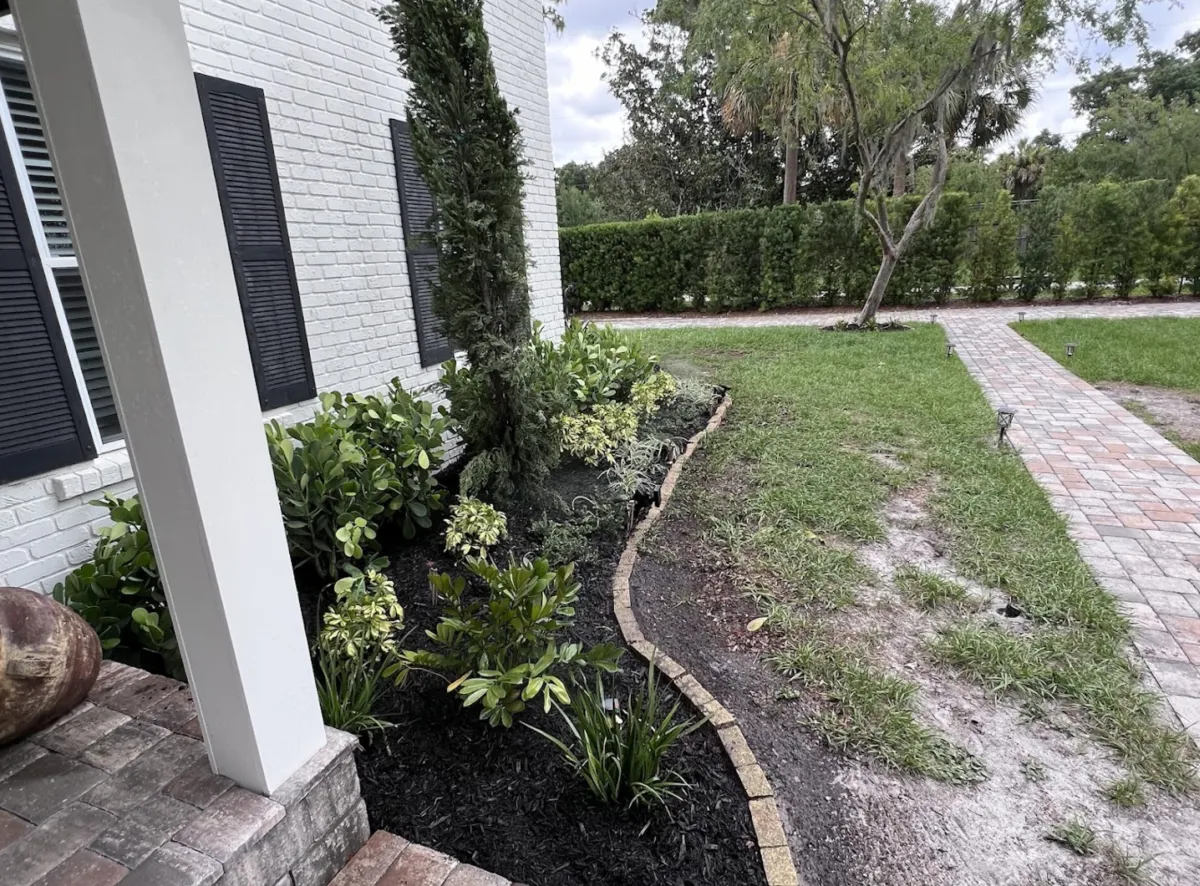

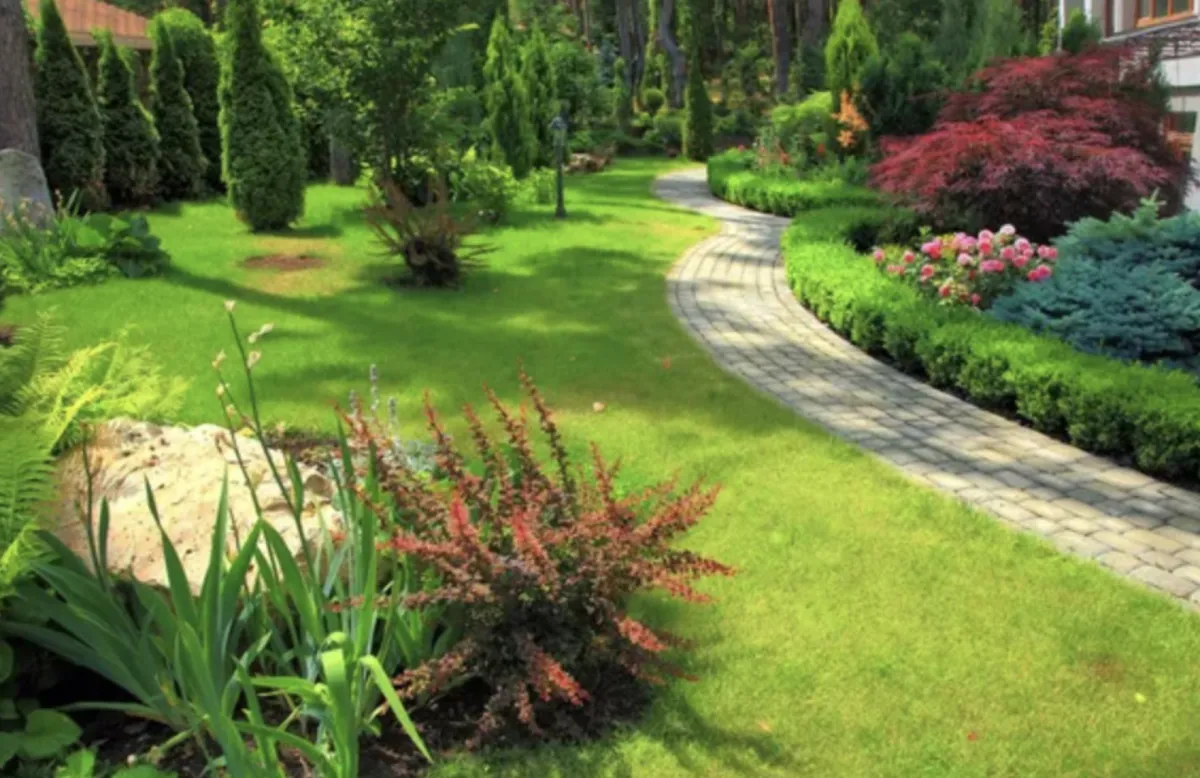
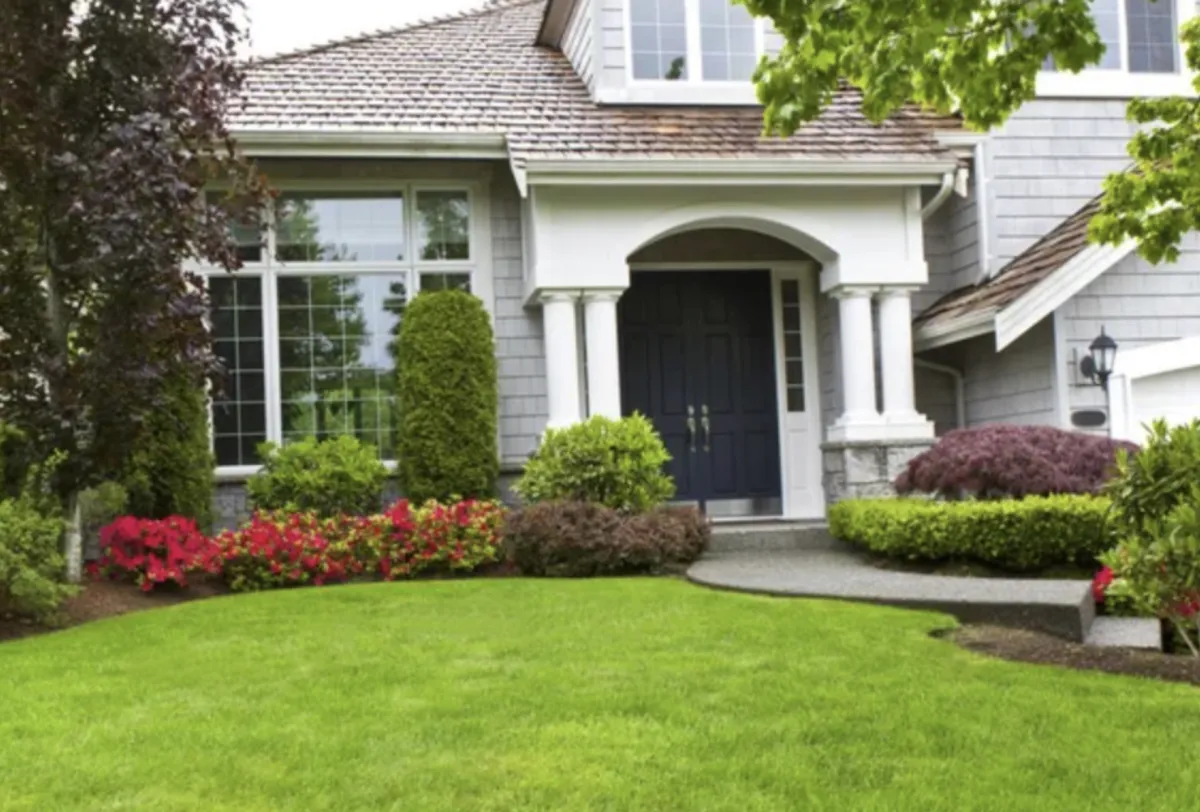
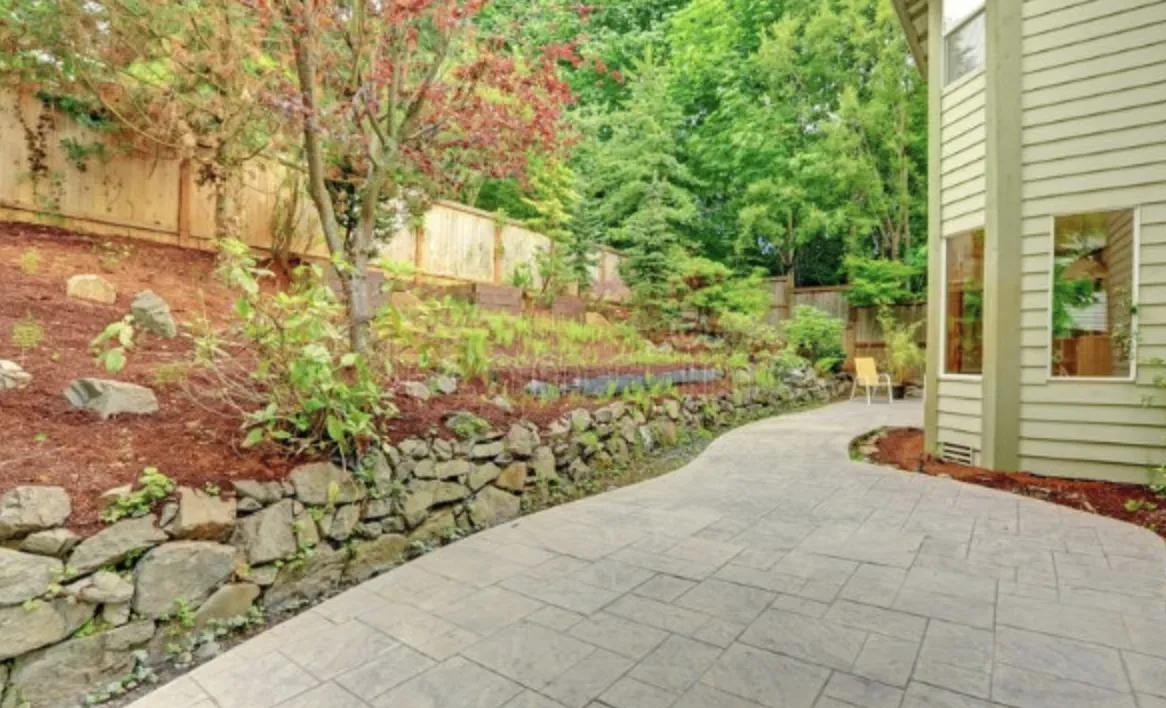

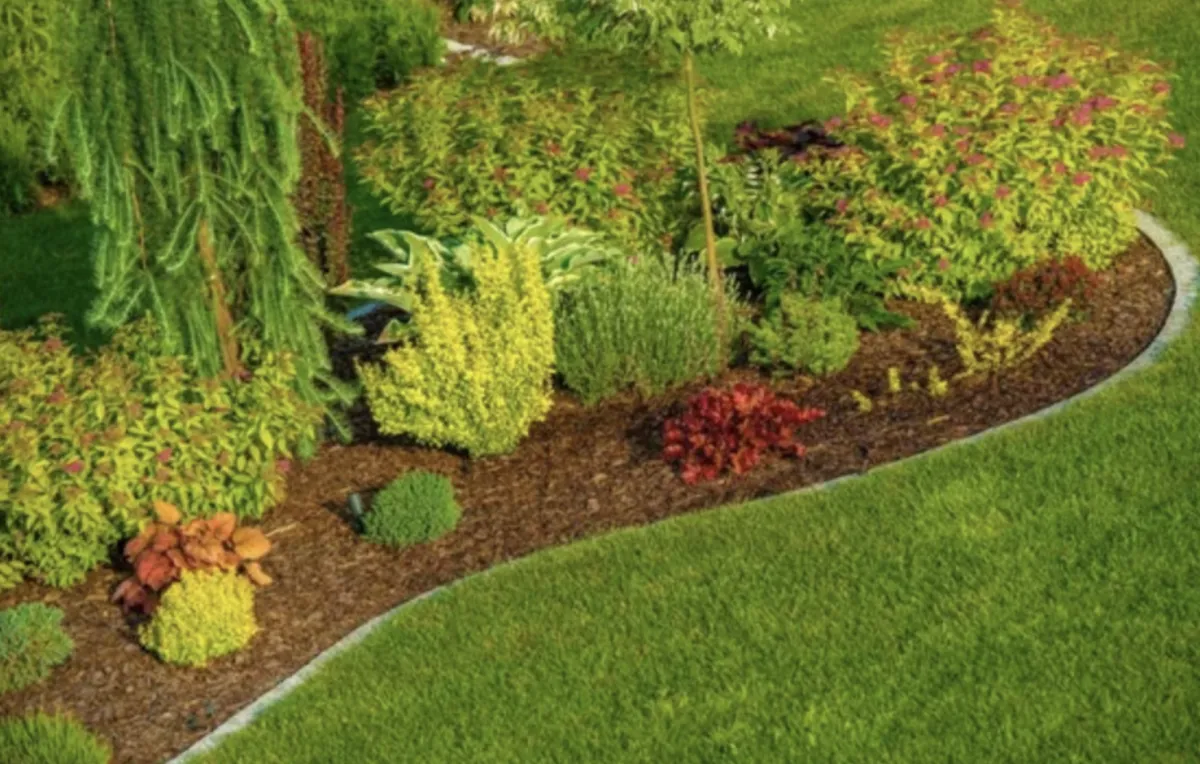

See What Our Customer Say About Us
Sarah M., Fort Worth, TX

“I can’t say enough good things about HF Landscape Design Fort Worth. They totally transformed our backyard into something out of a magazine — and they did it on time and within our budget. The team showed up early every day, cleaned up after themselves, and really listened to what we wanted. You can tell they actually care about the little details, not just getting the job done. Our neighbors keep stopping by asking who did the work — we tell everyone to call HF Landscape Design. Best decision we made for our home!”
Daniel R., Fort Worth, TX

“HF Landscape Design Fort Worth really blew us away. We had a plain front yard before, and now it looks like something you’d see in a design show. They helped pick the right plants for the Texas heat and even added lighting that makes the place glow at night. Super easy to talk to and very professional — they made the whole thing stress-free. We’d hire them again in a heartbeat.”
Megan & Tyler H., Fort Worth, TX

“Our backyard was just dirt and weeds before HF Landscape Design came in. Now it’s the spot where we spend every weekend with friends. They built a patio, added flower beds, and somehow made it all feel natural like it was always meant to be there. You can tell they love what they do — every detail was perfect. Highly recommend them to anyone in Fort Worth wanting a yard they’ll actually use.”
Get Professional Landscape Renovation
Stop dealing with landscapes that don't function properly or require constant maintenance. Get professional landscape renovation that preserves valuable elements while updating everything else for Fort Worth conditions.
Call (817) 580-3329 to schedule a landscape renovation consultation. We'll assess your property, identify what's worth keeping, and create renovation plans addressing problems while improving appearance and functionality.
Service Areas: Fort Worth, Tanglewood, Ridglea Hills, River Crest, Westover Hills, Berkeley, Monticello, Mistletoe Heights, and surrounding communities.
Frequently Asked Questions
What is the average cost of landscape design?
Landscape design costs in Fort Worth typically range from $2,000 to $8,000 depending on property size—project complexity—level of detail required. Simple front yard designs for smaller properties might run $1,500 to $3,000. Comprehensive landscape plans for larger properties with detailed planting plans—hardscape designs—irrigation layouts—lighting plans usually cost $5,000 to $10,000 or more. We typically credit design fees toward installation if you proceed with us for the work. Design-only services cost more since we're not recouping fees through installation. Most clients in areas like Tanglewood or Westover Hills invest in detailed designs because their properties warrant professional planning. Newer neighborhoods with simpler yards might need less extensive design work.
What does it cost for a landscape design?
Design fees depend on project scope and what you need included. Basic conceptual designs showing general layout—plant groupings—hardscape locations run $1,500 to $3,000 for typical residential properties. Detailed construction-level plans with exact plant specifications—hardscape dimensions—grading plans—irrigation zone maps cost $4,000 to $8,000 or higher for complex projects. Commercial landscape design involves additional complexity and typically costs more. We discuss your specific needs during initial consultation and provide design fee quotes based on actual scope. Design fees get credited toward installation when you hire us for the work. Fort Worth properties with challenging conditions—significant slopes—drainage issues—often need more detailed planning which affects design costs.
What is the difference between a landscape architect and a landscape designer?
Landscape architects have formal education—state licensing—ability to stamp engineering drawings for permits. They handle complex projects requiring grading engineering—structural calculations—commercial site development—regulatory compliance. Landscape designers focus on plant selection—aesthetic layout—residential design without engineering components. In Fort Worth, landscape architects are required for certain commercial projects—retaining walls over specific heights—projects needing engineered drainage solutions. Residential projects usually work fine with landscape designers unless you've got significant slope issues—major grading needs—structures requiring engineering stamps. Landscape architects cost more but bring technical expertise for complex projects. Most residential landscapes in neighborhoods like Arlington Heights or Ridglea work well with landscape designers. Larger estates or properties with serious site challenges benefit from landscape architectural services.
Why is landscape design so expensive?
Professional landscape design involves considerable time—expertise—detailed planning work. Designers spend hours on site assessment—measuring—analyzing drainage and sun patterns—researching plant options for specific conditions. Creating scaled plans requires CAD software skills—design knowledge—understanding of Fort Worth's climate and soil conditions. Good designers prevent expensive installation mistakes—plant failures—drainage problems that cost far more to fix later. You're paying for years of experience knowing what works in North Texas clay soil—which plants survive July heat—how to design irrigation zones efficiently. Design fees also cover revisions—client meetings—coordination with contractors during installation. Cheap or free designs often mean cookie-cutter plans—inexperienced designers—or design costs hidden in inflated installation prices. Professional design upfront saves money long-term by getting things right the first time.
What is the rule of 3 in landscaping?
The rule of three suggests planting in odd-numbered groups—typically three plants—creates more natural and visually appealing arrangements than even numbers. Three plants or features create triangular compositions—visual interest—balance without formal symmetry. This applies to groupings of the same plant variety or repeating design elements throughout the landscape. In Fort Worth landscapes, you might see three crape myrtles anchoring a bed—three groupings of ornamental grasses—three boulders in a natural arrangement. The rule helps avoid the static look of paired plantings or single specimens. Works for plants of various sizes—repetition of colors—hardscape feature placement. Not a strict requirement but a helpful design principle creating more dynamic landscapes. We use the rule of three alongside other design principles—proper spacing—mature size consideration—Fort Worth-appropriate plant selection.
What is a realistic landscaping budget?
Realistic budgets for Fort Worth landscape projects typically start around $10,000 for basic front yard renovations and run $20,000 to $50,000 for complete front and backyard transformations with hardscaping. Simple refreshes—new plants—mulch—irrigation repairs might cost $5,000 to $8,000. Projects including patios—retaining walls—outdoor kitchens—extensive plantings easily reach $50,000 to $100,000 or more. Budget depends on property size—existing conditions—how much hardscape you want—plant material quality and maturity. Fort Worth's clay soil often requires additional drainage work affecting costs. Established neighborhoods like Monticello with mature landscapes might need less work than new construction in Walsh Ranch starting from dirt. Quality materials and experienced installation cost more upfront but last longer and perform better in our climate.
